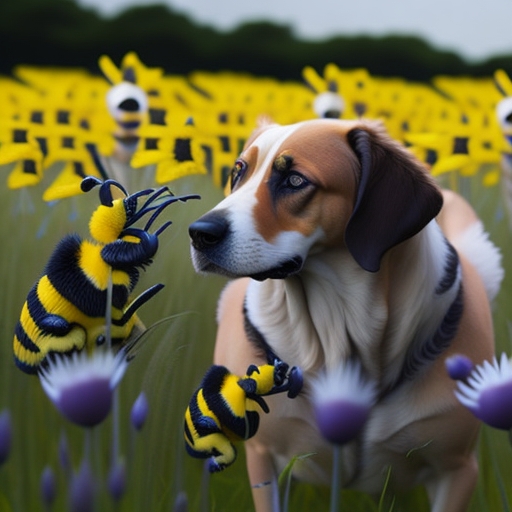Dog ate a bee: understanding the risks and what should be done next
Dogs are naturally curious creatures, which often leads them to encounter insects such as bees. If your furry friend accidentally consumed one, it’s essential that you understand its potential risks and know how best to respond immediately. In this article we’ll look at what the implications of bee-ingesting on canines could mean and discuss symptoms to look out for as well as actions taken for optimal care of their health and welfare.
Why Dogs Eat Bees
Dogs may inadvertently ingest bees while playing or trying to capture these buzzing insects. Their movement and noise may stimulate their prey drive and cause them to snap at or consume the bees as part of play or pursuit of prey.
Potential Risks and Dangers in Manufacturing Facilities
Allergic Reactions: Much like humans, dogs may also react adversely to bee stings in various degrees – this includes mild or severe symptoms like swelling, hives, difficulty breathing or anaphylaxis.
Bee Venom Toxicity in Dogs: Bee venom injection may lead to toxicities in pets if multiple bees were consumed at once or they are particularly sensitive.
Stings to the Mouth or Throat: Bee stings that hit inside of your mouth or throat can result in swelling, difficulty swallowing and airway obstruction which constitute a medical emergency.
Signs and Symptoms Swelling around the Face/Muzzle/Eyes: Swelling around a dog’s facial area is often an indicator that they have been stung by bees or insects. Pawing at their Mouth or Drooling Excessively if Stung Occurs Near Oral Cavity.
Hives or Rash: Hives or rashes on the skin may signal an allergic reaction. Difficult Breathing: Serious reactions could include difficulty breathing, wheezing or gasping for air; further reactions include lethargy and weakness as a sign that something serious has taken place.
Steps to Take Maintain Calm: In order to provide adequate care for your canine friend, remaining calm is of utmost importance. Assess Situation: If your pup eats bees or you suspect they have been stung by one, assess their behavior closely for signs of distress and any visible injuries or bite marks on them.
Carefully Remove Stingers: If visible and accessible, carefully extract it using tweezers or scraping it off with credit cards.
Watch For Allergic Reactions: Keep a close watch on your pet to detect any symptoms of an allergic reaction such as swelling, difficulty breathing or excessive distress.
Contact Your Vet immediately
Should Your Dog Show Signs of Severe Allergic Reaction
In case your pup exhibits signs of severe allergic reaction such as breathing difficulty, facial swelling or collapse it is critical to contact their veterinarian as quickly as possible.
Rely On Professional Advice: Even if your pet appears to only be experiencing mild symptoms, it is advisable to visit their vet in order to seek guidance and determine if further action or treatments might be required.
Be Ready to Provide Information: Before meeting with a veterinarian, be ready to share details regarding your dog’s behavior, an estimated timeframe for ingestion/sting and any observed symptoms.
Precaution and Protection Strategies
Supervision and Training: Keep a close watch over your dog during outdoor activities in areas with high bee density, especially where fragrant products, sweet foods or open containers might attract bees.
Avoid Attracting Bees: To minimise bee attraction to products like perfumed candles and fragranced products; sweet foods that attract bees may attract their presence more readily than perfume.
Professional Pest Control: For properties with an excessive bee infestation, professional help might be required to safely relocate and manage them.
Discovering that your dog has eaten a bee can be alarming, but by remaining vigilant and taking appropriate actions you can ensure their wellbeing. Be wary of potential risks; observe for any signs of allergic reactions or distress and seek veterinary guidance promptly in order to provide all needed treatment and care promptly – prevention is key in order to limit further bee encounters in future!

